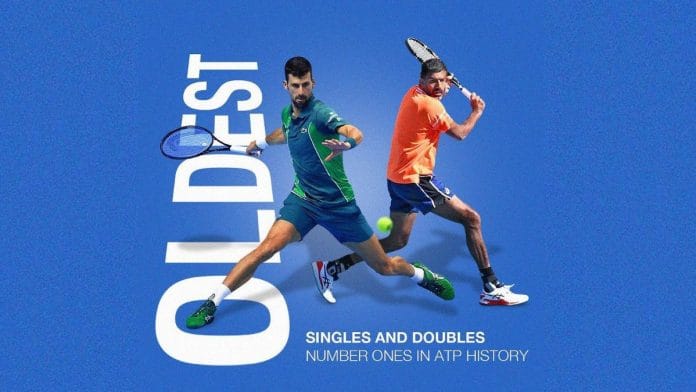Novak Djokovic posted a photograph with Rohan Bopanna on his social media, which boasted about the fact that both him, for singles, and Bopanna, for doubles, are the oldest men to hold the number one titles in tennis. With this gesture, Djokovic welcomes Bopanna with open arms to the G.O.A.T world. It’s official, and indisputable, now.
It was an emotional moment to see Bopanna clinch the doubles Australian Open title earlier this year amid ‘India-India’ chants. At 43, Bopanna was the oldest man in the open era to win a doubles tournament.
Men’s tennis has been dominated by The Big Three (Djokovic, Rafael Nadal, Roger Federer). But Bopanna made history and captured the imagination of big leaguers. He was instantly catapulted to superstardom, and became a household name.
He is undoubtedly an inspiration. But will he be able to wake the All India Tennis Association from its slumber?
In his acceptance speech post Australian Open, Bopanna candidly spoke about how he had planned to quit, and how much it took for him to give his dream another shot in his 40s. Bopanna’s rally to success has made him India’s latest dream worker. He has illustrated the meaning of ‘better late than never’.
Indian tennis is enjoying this kind of celebrity status on the world stage for the first time since Leander Paes’ retirement.
Also read: Farewell Federer, the best tennis player to touch the court. You’re GOAT beyond numbers
Indian tennis in tatters
Boppana’s elevation to GOAT status doesn’t mean tennis is a respected sport in India. Just last year, an emotional Sumit Nagal, who was then India’s highest ranked tennis player, revealed that he has less than Rs 1 lakh in his bank account.
In India’s supposed ‘Vishwaguru’ era this statement from a player of Nagal’s talent was a national embarrassment.
But things have looked brighter for Nagal since he made it to Round 2 of the Australian Open and played at Indian Wells after Rafael Nadal’s exit. On 8 April, Nagal became the first Indian man to win a Master’s 1000 match on clay.
But this shouldn’t have happened in the first place. India is consistently performing better at Olympics and Asian Games, and tennis has been played in the country since the 1880s. We’ve had a presence on the international stage since the early 1900s with Mohammed Sleem who played at Olympic level and Fyzee brothers, Jagat Mohan Lal and Ghaus Mohammad who competed at the Wimbledon level.
We’ve produced an ample number of stars since—Ramanathan Krishnan in the 1950s and 1960s, Vijay Amritraj in the 1970s, and Ramesh Krishnan in the 1980s. Mahesh Bhupathi, Leander Paes, Sania Mirza became the face of Indian tennis through the 1990s and the 2000s.
But we’ve not been able to build on this legacy to platform more stars. This is despite the fact that Mirza and Bhupathi have their own coaching centres now. And in this, the incompetence of AITA is clear. It might be an expensive sport to sustain, but the gains are exceedingly high.
Indian government needs to invest and democratise the sport to rake in serious talent. It shouldn’t be limited to a sport which the elites play as a hobby.
In an era when even a small country like Tunisia has an Ons Jabeur to represent it at the world stage, our players are far and few.
Bopanna has shown us grit and achieved the unthinkable in his 40s, now All India Tennis Association should learn from the best, and support emerging stars.
Views are personal.
(Edited by Theres Sudeep)






